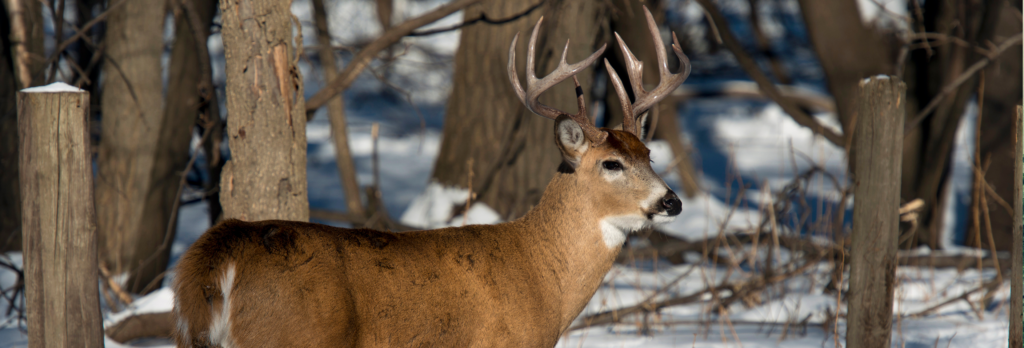
The SCI Foundation (SCIF) through the SCIF Conservation committee and the Conservation Department, are closely following the impacts of chronic wasting disease (CWD). As of January 2024, CWD has been found in deer, elk and/or moose in 32 states in the continental United States, as well as three provinces in Canada. In addition, CWD has been detected in reindeer/caribou in Norway, Finland and Sweden, and a few cases have been reported in South Korea.
It is not surprising that CWD is near the top of the list for conservation work at SCIF as the primary species affected by this disease are members of the Cervidae or deer family such as white-tailed deer, mule deer, elk, and moose. These species are the most popular and important game species in North America. Many hunters know that CWD is 100% fatal, however, the disease mechanisms are complicated. This is a degenerative neurological disease caused by misfolded proteins called prions. These prions are shed in saliva, urine, and feces and can persist for years in soil or other media. Prions infect healthy deer by causing conversion of normal proteins to new prions, and the disease is spread by direct contact among animals and exposure to prions in the environment.
Why should we care about assisting and preventing the spread of this disease? CWD has now become an international disease, affecting members of the Cervidae or deer family.
Past surveys by the United States Fish and Wildlife Service indicate that there were 11.5 million hunters who pursued big game, primarily deer and elk, spending approximately 135 million days afield and generating over $92,000,000 for conservation and wildlife management. Deer and elk hunting are, by far, the most important components of these numbers in the US. Because the North American model of wildlife conservation is supported largely by hunters and anglers, any threat to deer and elk hunting is a potential threat to the foundation of the conservation model itself.
Another concern is that CWD can affect deer and elk populations when prevalence in the population is high. The neurologic effects of CWD can increase susceptibility to other mortality sources, including predation and vehicle collision, as research findings have shown lower survival among CWD positive deer. Lower population growth rates have been documented in deer and elk populations affected long-term by CWD in Wyoming and Colorado.
Current management actions to control CWD are costly and burdensome for agencies and hunters. The costs of CWD management, including testing, sample collection, research, and control actions, run into the hundreds of millions of dollars for state and provincial agencies. Many management actions are also controversial and produce tension or even open conflict between fish and wildlife agencies and hunters.
Bans on the use of bait and urine-based lures in CWD-affected areas have been opposed by hunter groups in several states and can affect rural economies. Similarly, targeted removals of deer in CWD areas are expensive and can alienate local hunters or landowners. Limits on movement of carcasses from infected areas may discourage hunters from traveling and generating economic activity in those areas.
Prohibition of live cervid movement and depopulation of affected herds have had negative effects on the captive cervid industry, which can be important to rural economies and land conservation.
Such impacts make it important for political decision makers to have the best information about the effects of CWD management policies (both positive and negative).
At SCI Foundation, we are concerned about the impacts of CWD management actions. Specifically, we are working with researchers at Auburn University to quantify the effects of various policies (e.g., bait bans or carcass disposal restrictions) on risk of CWD establishment and spread. Using cutting edge population modeling techniques, we can evaluate various scenarios to determine the impact of a given CWD policy action on the chances of CWD establishment and rate of spread. We are also working with the University of Georgia on a project that will help the Georgia DNR work effectively with landowners and hunters to manage CWD when it is detected in that state by researching effective communication. These projects will produce peer-reviewed literature to guide future CWD management and provide practical tools to deer and elk managers at all levels. Through these projects and future collaborations with leading researchers, SCI Foundation continues to address the conservation issues and questions though science-based research which are key to modern wildlife management decisions that affect all of us.
